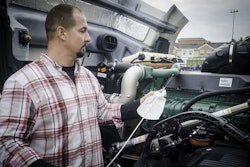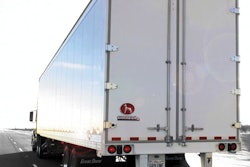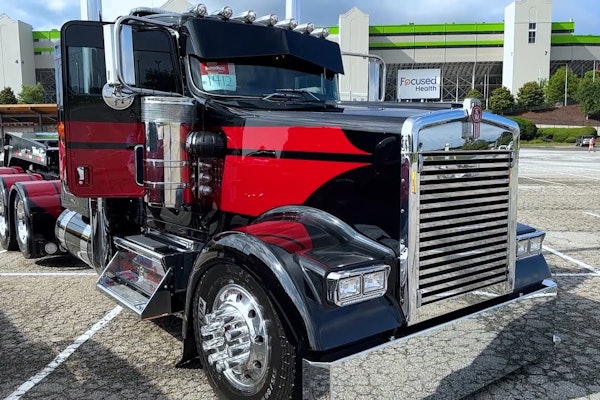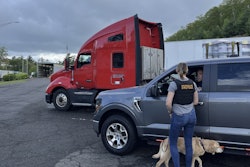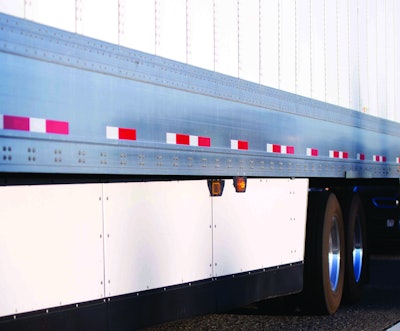 Since 2008, deployment of trailer skirts has exceeded 80 percent, according to the North American Council for Freight Efficiency’s Annual FleetFuel Study.
Since 2008, deployment of trailer skirts has exceeded 80 percent, according to the North American Council for Freight Efficiency’s Annual FleetFuel Study.Much has been done to improve aerodynamics in heavy truck design, but the same hardly can be said for the trailer. While the improved airflow coming off the tractor has a smoother impact on the box behind it, the responsibility of improving trailer drag has fallen largely on accessories such as skirts, tails and fairings.
Such add-ons promise potential fuel savings from 1 to 9 percent, according to the U.S. Environmental Protection Agency’s SmartWay program. EPA lists many of the trailer tail extensions at 1 to 4 percent savings and most of the skirts at 4 to 8 percent.
A 5 percent fuel savings, assuming $2.60 per gallon diesel and 120,000 miles a year at 8 miles per gallon, would yield an annual savings of $1,950.
When combined, some components offer savings of 9 percent or higher, EPA says. However, the net savings of multiple aerodynamic improvements may not always be cumulative.
“Generally speaking, if you have one thing, and then you add another thing, it’s not always a ‘1+1=2’ all the time,” said Josh Butler, president of FlowBelow, whose AeroKit works with the trailer by filling the gap between the truck’s drive axles. The kit’s rear panel, flared outward, helps the air jump the gap between the last fairing and the trailer skirt.
“It also helps to pull out the underbody flow of the truck,” Butler said. “Most importantly, it prevents [air] from going under the skirts.” Skirts reduce drag under the trailer by streamlining air around the sides and to the rear.
Trailer tails, another familiar add-on, reduce drag from the low-pressure area
created behind the trailer. Tails also increase safety by improving stability, said Prashanth Kamath, leader of Stemco’s Innovative Tire & Mileage Solutions segment. “It does a lot to streamline airflow and makes for a smoother drive, leading to lower driver fatigue.”
An owner considering the addition of tails or skirts should start with the industry’s most popular aerodynamic add-on, Kamath said.
“If you’ve got nothing, go with a skirt,” he said. “If you have a skirt, go with a tail. If you have a tail, go with an auto-deployment device” that opens the tail when a certain speed is reached.
SmartTruck’s TopKit is shaped like airplane wings and is mounted to the
trailer’s top and sides. It works similar to a tail by compressing, accelerating and redirecting airflow around the trailer’s rear corner.
“By pushing that flow around those corners, it fills that low-pressure pocket more effectively and lessens the amount of low pressure that is pulling on those doors,” said Steve Ingham, SmartTruck chief executive officer.
Last year, EPA shelved plans to include trailer efficiency in its Phase 2 greenhouse gas regulations that would have required all trailers to use some combination of efficiency technologies. This could have included aerodynamic upfits and low-rolling-resistance tires, among other options.
